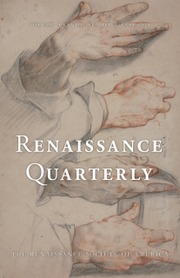A scholar with considerable experience in the study of medieval Jewish philosophical texts, Jean-Pierre Rothschild offers in this book the first thorough reconstruction of the intellectual profile of the fourteenth-century philosopher and exegete Moses ben Sabbatai. Active in Italy and possibly linked to the entourage of Judah of Rome (fl. 1310–20), Moses ben Sabbatai has left behind sparse autobiographical notes and less than a score of writings, mostly of a theological nature. His extant works are now presented here in annotated French translation supplemented with the original Hebrew text.
Rothschild’s book is divided into three parts. The first, comprising the editor’s introduction, situates Moses ben Sabbatai and his production in the wider context of Jewish philosophy in Italy between the end of the thirteenth and the first half of the fourteenth century. This section remarks the existence of a Jewish philosophical school whose adherents shared a common faith in Aristotelian metaphysics while also advancing Neoplatonic views. They were thus offering both a corrective to Maimonides’s rationalistic approach and an alternative to some of the theosophical theories of early kabbalah.
The second part of the book, which forms its bulk, consists in the translation and Hebrew edition of Moses ben Sabbatai’s extant works. The first of his writings here examined is an explication of Psalms 119:126, in which the philosopher advances what is, in fact, a doctrine of creation per esse tantum. He thus criticizes not only the kabbalistic idea of divine emanations (sefirot), but also the role of intermediary causes outside of the first cause—a role acknowledged by some of his contemporaries, starting with the aforementioned Judah of Rome. The second work here included, although in an abridged form, is Moses ben Sabbatai’s treatise Sha’are tzedek (Gates of justice). As the philosopher points out in the text itself, this is an apologetic work, in which the author seeks to prove the irrelevance of the talmudic and kabbalistic schools in rapport to the scope and nature of human intellect and to the question of how to best reconcile obedience to the precepts and intellectual research (95). Following are four much shorter works by Moses ben Sabbatai, including the annotations on extracts from Thomas Aquinas’s commentary on the Liber de causis (according to its Hebrew translation by Judah of Rome), and a poem elaborating on the concept of negative theology. Finally, the third part of the book includes five appendixes, among them a glossary of Hebrew technical terms used by Moses ben Sabbatai, which makes a welcome contribution to the study of the language of medieval Jewish philosophy.
Rotschild’s book is considerably useful not only because it fills a gap in the scholarship devoted to medieval Jewish philosophy but also because it reconstructs a significant chapter in the Hebrew reception of the Liber de causis, a work to which Moses ben Sabbatai owed much of his own version of Neoplatonized—in fact mystically inclined—Aristotelianism. In the Jewish tradition we count five Hebrew versions of the De liber de causis (all of them at some point investigated by Rothschild), including one by Judah Romano, a French translation of which is here offered as one of the appendixes. The Liber de causis did not have less significance, though, for some of the representatives of early kabbalah. In fact, the most influential kabbalistic appropriation of Proclus’s text was the one by Abraham Abulafia (1240–91), who had been among the hearers of one of Italy’s most enthused supporters of Maimonides, the philosopher and talmudist Hillel of Verona (ca. 1220–ca. 1295). As Saverio Campanini has shown, in his Imre shefer (Words of beauty) Abulafia quoted the Liber de causis (from Latin) to argue for the confluence of philosophy and kabbalah in negative theology and, in fact, to reiterate the doctrine of the sefirot. It seems, thus, that Proclus’s work could also bridge mysticism and rationalism in ways that departed from Moses ben Sabbatai’s own thought but rose from his same intellectual milieu—ways that, moreover, were bound to become consequential for later philosophical reflections produced within Italian Jewish circles in the Renaissance.



